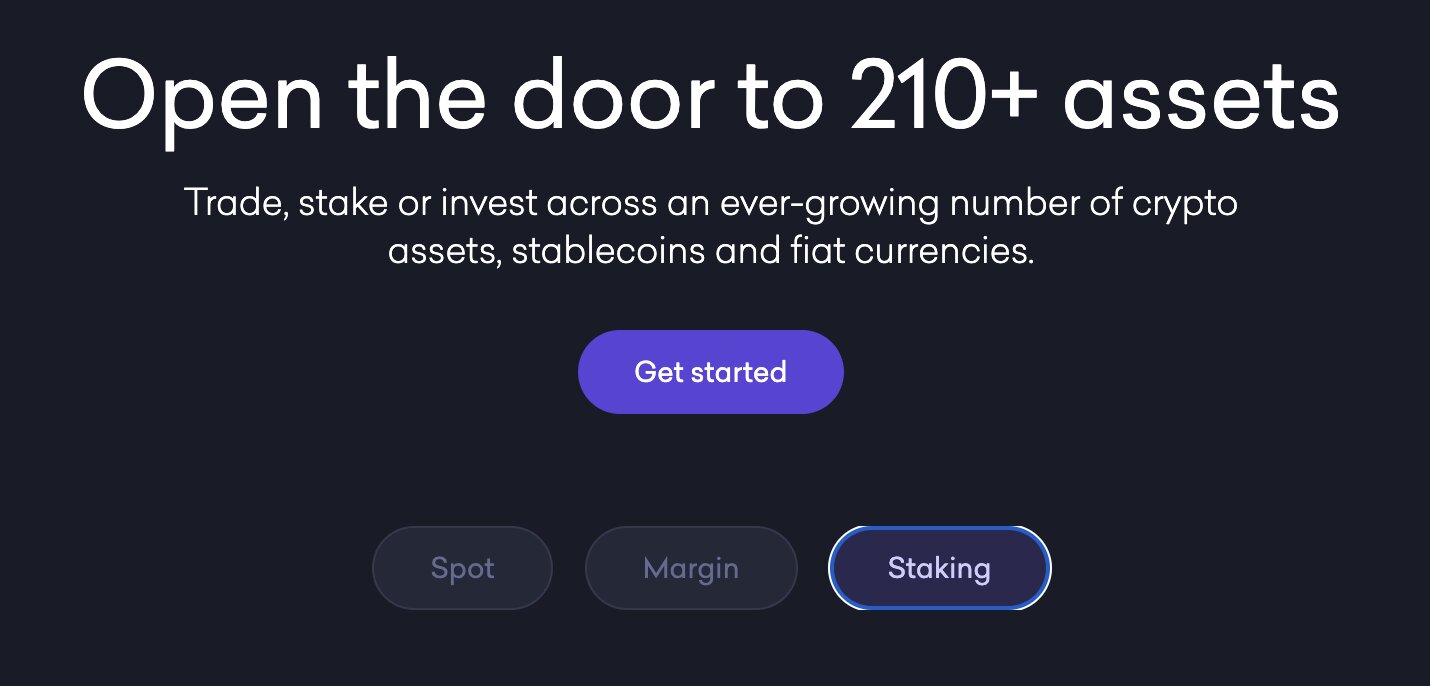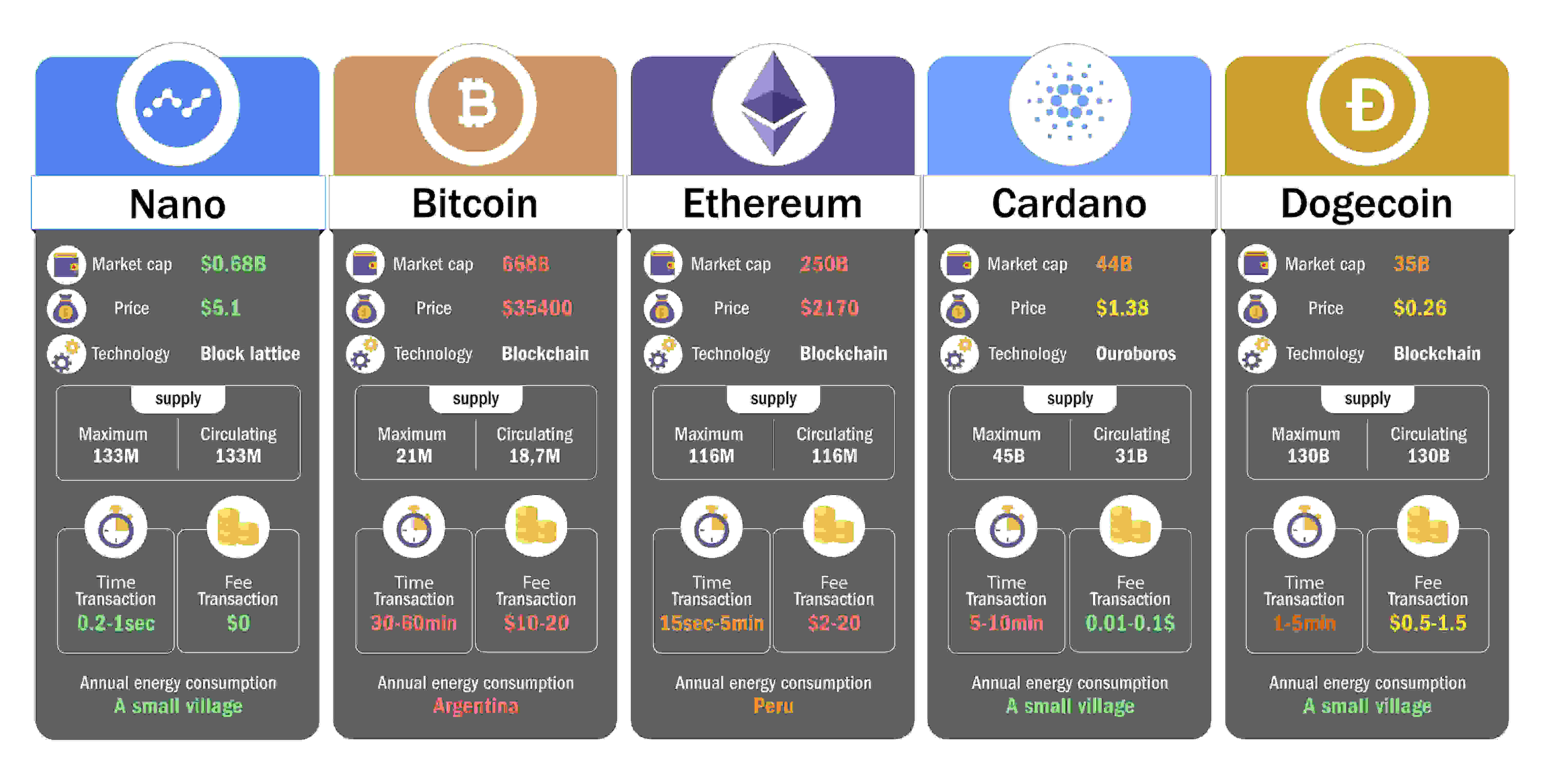Introduction
Polkadot is a cutting-edge cryptocurrency and blockchain network that has gained significant traction in the digital currency space. Born out of the vision and expertise of the Web3 Foundation, Polkadot aims to revolutionize the way blockchains operate and interact with one another. This innovative platform is designed to enable seamless communication and interoperability between different blockchains, effectively creating a decentralized internet of blockchains.
At its core, Polkadot tackles the challenge of scalability and interoperability that currently hinders many traditional blockchain networks. By utilizing a unique and novel architecture, Polkadot offers a scalable and secure framework for building and implementing decentralized applications (dApps).
Unlike other cryptocurrencies that focus solely on reinforcing their own blockchain networks, Polkadot takes a fundamentally different approach. It seeks to establish a network where multiple blockchains, known as parachains, can coexist and communicate with each other, enabling data and asset transfers across different blockchains. This interoperability greatly enhances the scalability and utility of decentralized applications, allowing for a wider range of use cases.
The driving force behind Polkadot’s success lies in its advanced consensus mechanism, known as the nominated proof-of-stake (NPoS) algorithm. NPoS ensures the network’s security, efficiency, and fair distribution of power among validator nodes. By securing the network through reliable validators who are entrusted by DOT (Polkadot’s native token) holders, Polkadot is able to achieve consensus in a secure and decentralized manner.
Polkadot has quickly gained recognition as a promising infrastructure for the blockchain industry, attracting developers and entrepreneurs alike. The platform’s modular architecture and extensive ecosystem provide a robust foundation for building and scaling decentralized applications. With its focus on interoperability, scalability, and security, Polkadot is poised to play a pivotal role in the evolution of the blockchain landscape.
What Is Polkadot?
Polkadot is a groundbreaking blockchain platform that aims to solve the challenges of scalability, security, and interoperability faced by traditional blockchain networks. Created by the Web3 Foundation, Polkadot introduces a unique and innovative approach to building and connecting multiple blockchains.
At its core, Polkadot is designed to enable the seamless transfer of data and assets across different blockchains, fostering interoperability and creating a decentralized internet of blockchains. This is accomplished through its novel architecture, which consists of a relay chain and multiple independent chains called parachains.
The relay chain is the main chain of Polkadot and serves as the central hub, coordinating the communication and security of the entire network. It is responsible for validating transactions, ensuring consensus among the parachains, and securing the network through its nominated proof-of-stake (NPoS) consensus algorithm.
Parachains, on the other hand, are individual blockchains that can be built using different technologies and have their own set of rules and governance. They connect to the relay chain to benefit from its security and communication abilities. Parachains can be customized to meet specific requirements, allowing developers to build decentralized applications (dApps) tailored to their needs.
Polkadot’s architecture also introduces an innovative concept called bridges, which enable connectivity between Polkadot and external blockchains, such as Ethereum. This interoperability expands the potential use cases of Polkadot and allows for seamless integration with existing blockchain ecosystems.
One of Polkadot’s key features is its ability to scale horizontally. By allowing multiple chains to operate in parallel, Polkadot can process a high number of transactions simultaneously, thus increasing network capacity. This scalability addresses one of the major limitations of traditional blockchains by eliminating congestion and reducing transaction fees.
Furthermore, Polkadot prioritizes security and decentralization by employing a robust consensus mechanism. The nominated proof-of-stake (NPoS) algorithm ensures the integrity and reliability of the network by involving token holders in the selection of validators who secure the network and validate transactions.
Overall, Polkadot represents a significant advancement in blockchain technology, tackling the key challenges faced by traditional blockchains. By enabling interoperability, scalability, and security, Polkadot paves the way for the development of complex decentralized applications and opens up new possibilities in the blockchain ecosystem.
How Does Polkadot Work?
Polkadot operates through a unique architecture that enables secure communication and interoperability between different blockchains. At its core, Polkadot consists of a central relay chain and multiple independent chains known as parachains.
The relay chain serves as the heart of the Polkadot network. It coordinates the overall network consensus, security, and interchain communication. The relay chain is responsible for validating transactions, maintaining the shared state of the network, and ensuring the security of the entire system.
Parachains, on the other hand, are independent blockchains that connect to the relay chain. Each parachain can have its own rules, logic, and governance, thereby catering to specific use cases and requirements. These parachains benefit from the security and interoperability provided by the relay chain.
Polkadot’s unique consensus mechanism, known as nominated proof-of-stake (NPoS), ensures the security and decentralization of the network. In NPoS, DOT token holders nominate validators who secure the network and validate transactions. Validators are chosen based on their stake and reputation, and they play a crucial role in maintaining the integrity of the Polkadot network.
Polkadot also introduces the concept of bridges, which enable interoperability between Polkadot and other blockchain networks. Bridges provide connectivity and facilitate the transfer of assets and data between different blockchains. This allows for seamless integration with existing blockchain ecosystems and expands the potential use cases of Polkadot.
One of the key features of Polkadot’s architecture is its ability to scale horizontally. By allowing multiple parachains to operate in parallel, Polkadot significantly increases the network’s transaction processing capacity. This scalability is essential for accommodating the growing demands of decentralized applications and avoiding network congestion.
Polkadot’s governance model is designed to be decentralized and community-driven. DOT token holders have voting power and can participate in decision-making processes related to the network’s development and upgrades. This ensures that the direction and evolution of Polkadot are aligned with the interests of the community.
Overall, Polkadot’s innovative architecture, consensus mechanism, scalability, and interoperability make it a powerful and versatile blockchain platform. By providing a secure and efficient framework for building decentralized applications that can seamlessly communicate with each other, Polkadot is driving the future of blockchain technology.
Key Features of Polkadot
Polkadot boasts a range of unique and powerful features that set it apart from traditional blockchain networks. These features contribute to its scalability, interoperability, security, and governance. Let’s explore some of the key features of Polkadot:
1. Interoperability: Polkadot allows different blockchains, known as parachains, to communicate and exchange data seamlessly. This interoperability promotes collaboration and the transfer of assets across various blockchain networks, enhancing the overall efficiency and utility of decentralized applications (dApps).
2. Scalability: Polkadot’s architecture enables horizontal scalability by allowing multiple parachains to operate in parallel, processing transactions simultaneously. This mechanism significantly increases the network’s capacity to handle a high volume of transactions, avoiding congestion, and ensuring smooth operations.
3. Security: Polkadot’s nominated proof-of-stake (NPoS) consensus algorithm ensures the security and integrity of the network. By involving token holders in the selection of validators, Polkadot achieves decentralization and prevents malicious activities. Validators play a crucial role in securing the network and validating transactions.
4. Governance: Polkadot features a sophisticated governance model that gives DOT token holders the power to participate in decision-making processes. By voting on proposals and upgrades, token holders actively shape the future direction of Polkadot and foster a decentralized and community-driven ecosystem.
5. Customizability: Polkadot’s flexible architecture allows parachains to be tailored to specific use cases and requirements. Developers have the freedom to create customized parachains, incorporating their desired functionalities and governance mechanisms.
6. Bridges: Polkadot includes bridge functionalities that enable interoperability between Polkadot and other blockchain networks, such as Ethereum. These bridges facilitate the seamless transfer of assets and data across different blockchains, expanding the scope of applications and allowing for integration with existing ecosystems.
7. Upgradeability: Polkadot is designed to support smooth and efficient upgrades. Through its governance model, upgrades can be proposed, voted on, and implemented without disrupting the network’s overall operations. This ensures that Polkadot remains adaptable and future-proof.
With these unique features, Polkadot offers a robust and forward-thinking blockchain solution. Its ability to facilitate interoperability, scalability, security, and community governance positions Polkadot as a leading platform in the blockchain space.
The Polkadot Token (DOT)
The Polkadot network operates with its native cryptocurrency called DOT. DOT serves multiple purposes within the Polkadot ecosystem and plays a crucial role in the platform’s governance, staking, and utility aspects.
1. Governance: DOT token holders have the power to participate in the governance of the Polkadot network. By holding DOT, token holders can vote on proposals, upgrades, and other governance matters. This ensures that the community has a say in the direction and development of the network.
2. Staking: DOT holders can also stake their tokens to become validators or nominate validators within the network. Validators are responsible for validating transactions and ensuring the security and integrity of the Polkadot network. By staking DOT, token holders can actively contribute to the network’s operations and earn rewards in return.
3. Bonding: DOT serves as a bonding mechanism within Polkadot. In order to connect and secure a parachain to the Polkadot relay chain, projects need to bond a certain amount of DOT tokens. This bonding requirement helps maintain the security and trustworthiness of the network, as it incentivizes projects to have a stake in the overall ecosystem.
4. Utility: DOT has utility within the Polkadot ecosystem. It can be used to pay for transaction fees, participate in decentralized applications (dApps), and engage in various activities within the network. As the Polkadot ecosystem expands and more applications are built, the demand for DOT as a utility token is likely to increase.
5. Governance & Inflationary Model: The supply of DOT tokens is dynamic and subject to governance decisions. The Polkadot network follows an inflationary model, where new DOT tokens are minted and distributed to validators and nominators as rewards for securing the network. DOT holders have the power to vote on the inflation rate and other supply-related matters through the governance process.
Overall, the DOT token is a fundamental element of the Polkadot ecosystem. It enables governance participation, staking, bonding, and utility within the network. With its multifaceted role, DOT token holders actively contribute to the security, integrity, and growth of the Polkadot platform.
The Polkadot Ecosystem
The Polkadot ecosystem is a thriving and dynamic community of developers, projects, and stakeholders collaborating to foster innovation and growth within the blockchain space. At the heart of this ecosystem is the Polkadot network, which provides the infrastructure for building and connecting parachains and enabling seamless interoperability. Let’s explore the key components of the Polkadot ecosystem:
1. Parachains: Parachains are independent blockchains that connect to the Polkadot relay chain. They can be developed using various technologies and tailored to specific use cases. Parachains benefit from the security, scalability, and interoperability offered by Polkadot, allowing for the creation of diverse and specialized applications.
2. Decentralized Applications (dApps): The Polkadot ecosystem enables the development of decentralized applications that can leverage the benefits of interconnected parachains. These dApps have access to a wider range of functionalities and data from other parachains, resulting in increased efficiency and potential for innovative use cases.
3. Substrate: Substrate is a modular framework for building custom blockchains and parachains within the Polkadot ecosystem. It provides developers with powerful and flexible tools to create blockchain solutions that meet specific requirements. Substrate’s user-friendly interface and extensive libraries make it easier for developers to build and deploy their projects on Polkadot.
4. Bridges: Polkadot’s bridging technology allows for seamless connectivity and interoperability with external blockchains. Bridges enable the transfer of assets and data between Polkadot and other blockchain networks, such as Ethereum. This opens up opportunities for cross-chain collaboration, liquidity sharing, and access to a broader range of blockchain ecosystems.
5. Polkadot Treasury: The Polkadot network has a treasury that is funded by a portion of the newly minted DOT tokens. The treasury is governed by the community, and the funds can be allocated towards initiatives that contribute to the growth and development of the Polkadot ecosystem. This mechanism ensures sustainable funding for innovation and ecosystem expansion.
6. Ecosystem Projects: The Polkadot ecosystem is home to a diverse range of projects and teams working on various decentralized applications, infrastructure development, and tooling. These projects leverage the capabilities of Polkadot to drive innovation and explore new possibilities in areas such as finance, supply chain, gaming, and more.
7. Community and Governance: The Polkadot ecosystem thrives on a vibrant and active community of developers, validators, stakeholders, and enthusiasts. The governance model of Polkadot allows community members to propose and vote on network upgrades, parameter changes, and the allocation of resources. This ensures that the ecosystem evolves in a decentralized and inclusive manner.
The Polkadot ecosystem is continuously growing and evolving, driven by the collective efforts of its participants. With its emphasis on interoperability, scalability, and community governance, Polkadot provides a fertile ground for innovation and collaboration, shaping the future of blockchain technology.
Polkadot vs Other Blockchains
Polkadot stands out among other blockchain networks due to its unique features and capabilities. Let’s compare Polkadot with other popular blockchains to highlight its key advantages:
Scalability: Unlike many traditional blockchains that suffer from scalability issues, Polkadot offers horizontal scalability. By allowing multiple parachains to run in parallel, Polkadot can process a high number of transactions simultaneously, providing a solution to the scalability problem.
Interoperability: Polkadot’s focus on interoperability sets it apart from many other blockchains. While some blockchains operate as isolated networks, Polkadot allows parachains to communicate with each other, enhancing collaboration and enabling seamless asset and data transfers.
Customizability: Polkadot’s architecture allows for the creation of custom parachains that can be tailored to specific use cases. Developers have the freedom to design their own blockchains with desired functionalities, governance models, and consensus mechanisms, giving them more flexibility and control.
Security: Polkadot employs a nominated proof-of-stake (NPoS) consensus algorithm to ensure network security and prevent centralization. Token holders nominate validators who participate in securing the network, resulting in a decentralized and robust network infrastructure.
Upgradeability: Polkadot’s governance model enables smooth and efficient upgrades. The community can propose and vote on proposals, allowing for network improvements and the adoption of new technologies without disrupting the overall system.
Connectivity: Polkadot’s bridging technology enables connectivity with external blockchains, expanding its reach and potential use cases. This connectivity allows for the seamless transfer of assets and data between different blockchain ecosystems, enhancing liquidity and fostering cross-chain collaboration.
Community-driven Governance: Polkadot promotes community-driven governance, giving voice and power to its token holders. The community can actively participate in decision-making processes regarding network upgrades, parameter changes, and resource allocation, ensuring a decentralized and inclusive ecosystem.
Ecosystem Integration: Polkadot facilitates the integration of existing blockchains and protocols. Its architecture and bridging capabilities allow for the incorporation of external systems into the Polkadot ecosystem, creating a unified ecosystem with interoperability between different blockchain networks.
While other blockchains have made significant contributions to the blockchain space, Polkadot’s unique features in terms of scalability, interoperability, customizability, security, upgradeability, connectivity, governance, and ecosystem integration make it a frontrunner in the industry. Polkadot’s holistic approach to addressing the limitations of traditional blockchains positions it as a powerful and promising platform for building the decentralized applications and infrastructure of the future.
Potential Use Cases for Polkadot
Polkadot’s unique architecture and features open up a wide range of potential use cases across various industries. Let’s explore some of the potential applications where Polkadot can make a significant impact:
1. Decentralized Finance (DeFi): Polkadot can revolutionize the DeFi space by enabling interoperability between different financial blockchains and protocols. It can facilitate the seamless transfer of assets, foster decentralized exchanges, and provide a scalable infrastructure for lending, staking, and other financial services.
2. Supply Chain Management: Polkadot’s ability to connect multiple blockchains makes it an ideal platform for secure and transparent supply chain management. By integrating with different supply chain networks and applications, Polkadot can enhance traceability, reduce fraud, and enable more efficient and reliable supply chain processes.
3. Gaming and Non-Fungible Tokens (NFTs): The gaming industry can leverage Polkadot to create decentralized gaming platforms and marketplaces. Polkadot’s scalability and interoperability make it suitable for managing NFTs, enabling the creation, trading, and ownership of unique in-game assets and virtual collectibles.
4. Identity Management: Polkadot can provide a secure and decentralized framework for managing digital identities. With its cross-chain connectivity, Polkadot has the potential to create an interoperable identity system that ensures privacy, security, and seamless authentication across different blockchains and applications.
5. Government and Public Sector: Polkadot’s governance model and transparent infrastructure present opportunities for implementing more efficient and secure government services. Applications could include secure voting systems, transparent and auditable records, and decentralized identity for citizens.
6. Internet of Things (IoT): Polkadot’s scalability and security features make it suitable for integrating IoT devices and networks. Polkadot’s interoperability can enable secure communication and data exchange between IoT devices, facilitating the creation of robust and interconnected IoT ecosystems.
7. Cross-Chain Collaboration: Polkadot’s bridging capabilities allow for collaboration and integration between different blockchains. Businesses and projects can leverage Polkadot to share liquidity, data, and functionalities, enabling cross-chain collaboration and innovation.
8. Academic and Scientific Research: Polkadot’s flexible architecture and customizable parachains can support academic and scientific research initiatives. It provides an environment where researchers can create private or permissioned blockchains tailored to their specific requirements, facilitating collaboration, data sharing, and secure peer review processes.
These are just a few potential use cases for Polkadot, showcasing its versatility and potential impact across various industries. As the Polkadot ecosystem continues to grow and evolve, we can expect innovative applications and solutions to emerge, transforming the way we interact and conduct business in the digital world.
The Future of Polkadot
The future of Polkadot holds immense potential for innovation, growth, and widespread adoption in the blockchain industry. With its unique architecture and advanced features, Polkadot is set to redefine how blockchains operate and interact with each other. Let’s explore some key aspects that shape the future of Polkadot:
1. Ecosystem Expansion: The Polkadot ecosystem is rapidly expanding, attracting developers, projects, and investors from around the world. As more parachains are connected to the Polkadot network, the ecosystem will become richer and more diverse, fostering collaborative development and enabling a wider range of applications.
2. Enterprise Adoption: Polkadot’s scalability, security, and interoperability make it an attractive option for enterprises seeking to leverage blockchain technology. As the platform matures and gains further recognition, we can expect increased enterprise adoption of Polkadot for various use cases such as supply chain management, finance, data management, and more.
3. Bridging with Other Blockchains: Polkadot’s bridging capabilities will strengthen its position as a leading interoperable blockchain platform. The ability to connect with other blockchains, such as Ethereum, will open up new possibilities for cross-chain collaboration, expand liquidity pools, and drive innovation across multiple ecosystems.
4. Scalability Solutions: Polkadot’s commitment to scalability will continue to drive research and development efforts. As the demand for decentralized applications and blockchain solutions grows, Polkadot will focus on optimizing its architecture and consensus algorithms to further enhance scalability and processing capabilities.
5. Enhanced Security Measures: Polkadot will continually improve its security measures through the nominated proof-of-stake (NPoS) consensus algorithm. Additional enhancements, such as advanced cryptographic techniques and constant auditing, will ensure the network remains secure and resilient against potential attacks or vulnerabilities.
6. Regulatory Compliance: With increasing attention from regulators, Polkadot will work towards ensuring compliance with evolving regulations. By collaborating with regulatory bodies and integrating compliance tools and mechanisms, Polkadot aims to provide a secure and compliant environment for businesses and users.
7. Continued Innovation: Polkadot’s commitment to innovation will fuel ongoing research and development. The platform will continuously evolve, introducing new features, technologies, and tools to improve the user experience, expand functionality, and address emerging challenges in the blockchain industry.
The future of Polkadot is promising, with the potential to reshape industries and drive the widespread adoption of blockchain technology. With its focus on scalability, interoperability, security, and governance, Polkadot is well-positioned to play a pivotal role in the decentralized future, ushering in a new era of collaboration, transparency, and efficiency.
Conclusion
Polkadot is a groundbreaking blockchain platform that offers a unique and innovative approach to solving the challenges faced by traditional blockchains. With its emphasis on scalability, interoperability, security, and governance, Polkadot is poised to revolutionize the blockchain industry.
By providing a seamless communication and interoperability framework between different blockchains through its relay chain and parachains, Polkadot allows for the creation of a decentralized internet of blockchains. This enables the transfer of assets, data, and functionalities across multiple chains, increasing efficiency, scalability, and utility.
Polkadot’s nominated proof-of-stake (NPoS) consensus algorithm ensures the security and decentralization of the network. Through community-driven governance, token holders have the power to participate in decision-making processes, shaping the future direction of Polkadot.
The Polkadot ecosystem is expanding rapidly, attracting developers, projects, and enterprises looking to leverage its unique features. With its bridging capabilities, Polkadot can connect with external blockchains, creating opportunities for cross-chain collaboration and integrating with existing blockchain ecosystems.
The future of Polkadot is bright, with potential use cases spanning from decentralized finance and supply chain management to gaming, identity management, and beyond. As the network continues to evolve and gain traction, we can expect increased enterprise adoption, improved scalability solutions, and continuous innovation.
With its relentless pursuit of scalability, interoperability, security, and governance, Polkadot is leading the way in shaping the decentralized future. The technology and ecosystem that Polkadot provides have the potential to transform industries and drive the widespread adoption of blockchain technology.

























